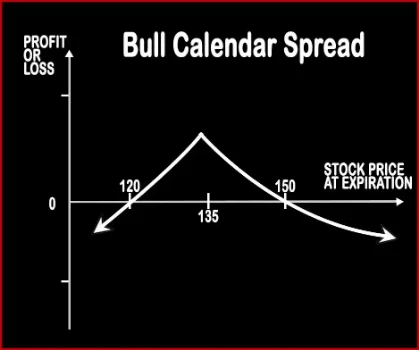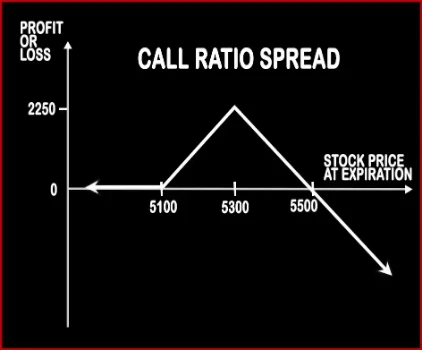Compare Strategies
| BULL CALENDER SPREAD | RATIO CALL SPREAD | |
|---|---|---|

|

|
|
| About Strategy |
Bull Calendar Spread Option StrategyThis strategy is implemented when a trader is bullish on the underlying stock/index in the short term say 2 months or so. A trader will write one Near Month OTM Call Option and buy one next Month OTM Call Option, thereby reducing the cost of purchase, with the same strike price of the same underlying asset. This strategy is used when a trader wants to make prof |
Ratio Call Spread Option StrategyAs the name suggests, a ratio of 2:1 is followed i.e. buy 1 ITM Call and simultaneously sell OTM Calls double the number of ITM Calls (In this case 2). This strategy is used by trader who is neutral on the market and bearish on the volatility in the near future. Here profits will be capped up to the premium amount and risk will be potentially unlimited since he is .. |
BULL CALENDER SPREAD Vs RATIO CALL SPREAD - Details
| BULL CALENDER SPREAD | RATIO CALL SPREAD | |
|---|---|---|
| Market View | Bullish | Neutral |
| Type (CE/PE) | CE (Call Option) + PE (Put Option) | CE (Call Option) |
| Number Of Positions | 2 | 3 |
| Strategy Level | Beginners | Beginners |
| Reward Profile | Unlimited | Limited |
| Risk Profile | Limited | Unlimited |
| Breakeven Point | Stock Price when long call value is equal to net debit. | Upper Breakeven Point = Strike Price of Short Calls + (Points of Maximum Profit / Number of Uncovered Calls), Lower Breakeven Point = Strike Price of Long Call +/- Net Premium Paid or Received |
BULL CALENDER SPREAD Vs RATIO CALL SPREAD - When & How to use ?
| BULL CALENDER SPREAD | RATIO CALL SPREAD | |
|---|---|---|
| Market View | Bullish | Neutral |
| When to use? | This strategy is used when a trader wants to make profit from a steady increase in the stock price over a short period of time. | This strategy is used by trader who is neutral on the market and bearish on the volatility in the near future. Here profits will be capped up to the premium amount and risk will be potentially unlimited since he is selling two calls. |
| Action | Sell 1 Near-Term OTM Call, Buy 1 Long-Term OTM Call | Buy 1 ITM Call, Sell 2 OTM Calls |
| Breakeven Point | Stock Price when long call value is equal to net debit. | Upper Breakeven Point = Strike Price of Short Calls + (Points of Maximum Profit / Number of Uncovered Calls), Lower Breakeven Point = Strike Price of Long Call +/- Net Premium Paid or Received |
BULL CALENDER SPREAD Vs RATIO CALL SPREAD - Risk & Reward
| BULL CALENDER SPREAD | RATIO CALL SPREAD | |
|---|---|---|
| Maximum Profit Scenario | You have unlimited profit potential to the upside. | Strike Price of Short Call - Strike Price of Long Call + Net Premium Received - Commissions Paid |
| Maximum Loss Scenario | Max Loss = Premium Paid + Commissions Paid | Price of Underlying - Strike Price of Short Calls - Max Profit + Commissions Paid |
| Risk | Limited | Unlimited |
| Reward | Unlimited | Limited |
BULL CALENDER SPREAD Vs RATIO CALL SPREAD - Strategy Pros & Cons
| BULL CALENDER SPREAD | RATIO CALL SPREAD | |
|---|---|---|
| Similar Strategies | The Collar, Bull Put Spread | Variable Ratio Write |
| Disadvantage | • Limited profit even if underlying asset rallies. • If the short call options are assigned when the underlying asset rallies then losses can be sustained. | • Unlimited potential loss. • Complex strategy with limited profit. |
| Advantages | • Limited losses to the net debit. • Enable trader to book profit even if underlying asset stays stagnant. • If the market trends reverse, cashing in from stock price movement at limited risk. | • Downside risk is almost zero. • Investors can book profit from share prices moving within given limits. • Trader can maximise profit when the share closes at the upper breakeven point. |